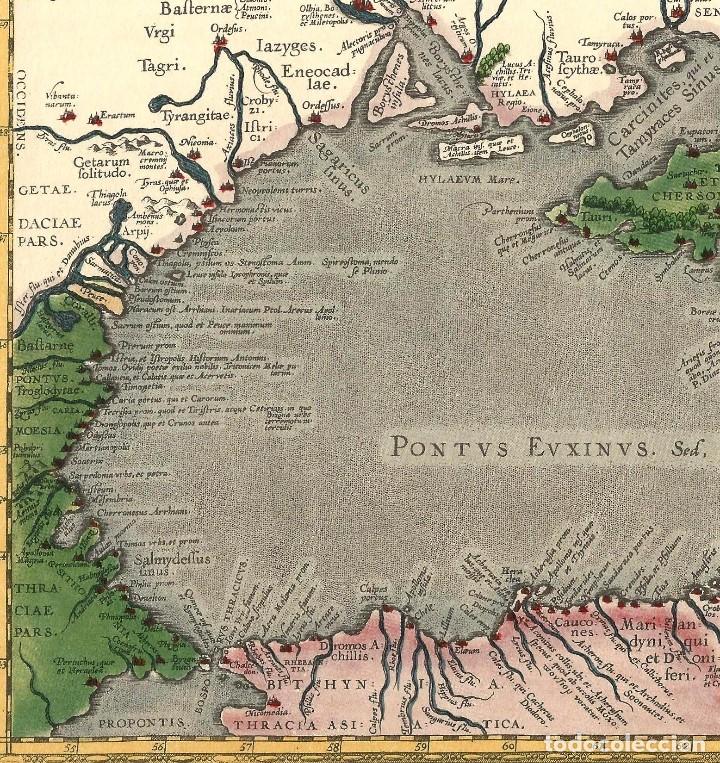
The collection’s strength in maps of North America includes not only early maps by Ruysch (1508), but also a variety of late sixteenth-century maps by Mercator and Ortelius the Sanson map of 1650, the first to depict all five of the Great Lakes and multiple copies of important eighteenth-century maps including five copies of the 1730 Amsterdam edition of Guillaume de L’Isle’s Carte de la Louisiane et du cours du Mississippi nine copies in variant states and editions of John Mitchell’s Map of the British and French Dominions in North America, first published in 1755 and used to establish the borders of the United States in the Treaty of Paris in 1783 and twenty copies in various states and editions of Lewis Evans, A General Map of the Middle British Colonies in America (1755), including a proof copy printed on silk. Measuring 3 feet by 5 feet, the map revolutionized the understanding of the North American West. The field maps of the Lewis and Clark expedition, created in the course of traveling across the continent, are complemented by William Clark’s manuscript map of the West, completed in St. Prepared by Aztec artists, it depicts landholdings in the northeastern portion of the city and was likely prepared at evidence to be presented in court to resolve a dispute between indigenous elites and local residents. The Codex Reese, dated circa 1565, is regarded as the fourth oldest surviving map of any part of Tenochtitlan, modern-day Mexico City. It came to Yale in 1962, the gift of an anonymous donor.

There is evidence that Christopher Columbus studied the map. In 1491, Henricus Martellus, a German cartographer working in Italy and on the Iberian Peninsula in the late fifteenth century, painted a highly detailed map of the world that incorporated the latest Portuguese discoveries along the east coast of Africa. The library holds several extraordinary early manuscript maps. The Gates gift includes four dozen globes dating from the early seventeenth century along with an extensive collection of books about globes and globe making. Lanman also presented the library with a significant collection of early modern globe gores. Lanman’s gift included a pair of late seventeenth-century globes (one terrestrial and one celestial) produced by noted Italian cartographer Vincenzo Coronelli. The library’s collection of globes traces to major gifts from Jonathan Lanman, 1940, and Stephen Gates, 1968. Taylor Collection includes copies of important early sea atlases by Waghenaer, Colom, Dudley, Blaeu, Goos, and Seller. The library holds fourteen Mercator atlases, eleven by Ortelius, and twenty-five editions of various atlases by Joan and Willem Blaeu, including two editions of Joan Blaeu’s monumental Atlas Maior – the eleven-volume Latin edition of 1662 and the twelve-volume French edition of 1663. The library’s run of Ptolemy’s Geographia, the volume that ushered in a new age of geographic understanding throughout Europe, begins with the first printed edition of 1475 and includes three of the five incunable editions with maps the 1508 edition with the world map by Johannes Ruysch, one of the earliest printed maps to include the Americas and fifteen additional sixteenth-century editions as well as a number from the seventeenth and eighteenth centuries. They include an Italian chart of the Mediterranean and Black Seas made in Genoa in 1403 a late fifteenth-century chart attributed to Petrus Roselli on Mallorca an early Portuguese chart, made by Jorge d’Aguilar at Lisbon in 1492 and one of three portolans known to have been made by Jewish cartographer Jehuda Abenzara, drawn at Tsefat in Galilee in 1505. Geographically comprehensive, including maps of all parts of the globe, the collection’s distinctive strength lies in maps of North America from the seventeenth through the nineteenth century.Īmong the earliest maps at the Beinecke Library are thirty manuscript portolans.

The library holds more than 20,000 maps in over 24,000 sheets, accompanied by more than 4,000 atlases and a few dozen early globes. This brief introduction provides an overview of one of the country’s largest cartographic collections. Curatorial oversight of maps in the Beinecke Library is distributed geographically and chronologically across the collections. Nineteenth- and twentieth-century government-sponsored survey maps, whether topographic, geologic, or nautical, are gathered at the Center for Science and Social Science Information.

The Beinecke Library is Yale University’s principal repository for atlases, globes, and sheet maps produced before 1921.


 0 kommentar(er)
0 kommentar(er)
